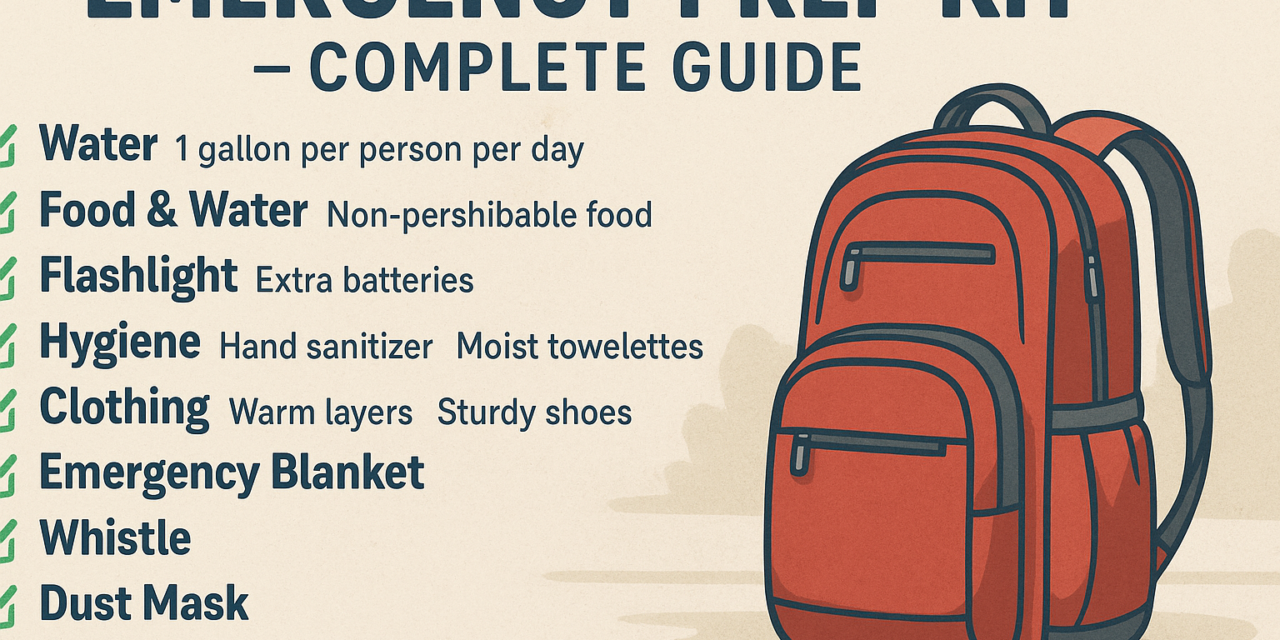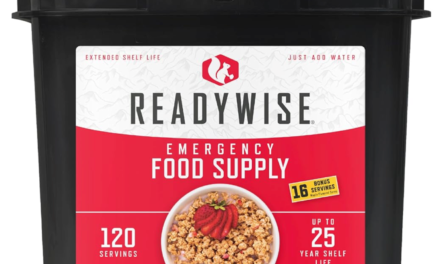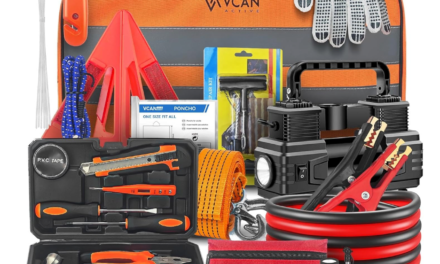Emergency Prep Kit.
When disaster strikes, being prepared can mean the difference between safety and chaos. An emergency prep kit is your personal lifeline, giving you the supplies and tools to survive until conditions improve or help arrives. Whether it’s a natural disaster, extended power outage, or other crisis, having the right gear on hand is critical.
This guide covers what to include in your kit, how to store it, and how to tailor it to your family’s needs.
Why You Need an Emergency Prep Kit
Emergencies often happen without warning. Water systems can become contaminated, power grids can fail, and supply chains can be disrupted for days. In many cases, first responders may not be able to reach you right away.
A complete emergency prep kit ensures you can:
- Stay hydrated and nourished
- Maintain hygiene and sanitation
- Treat minor injuries
- Keep warm and sheltered
- Stay informed and communicate
Core Essentials for Any Emergency Prep Kit
Water
Water is your most critical resource. Plan for one gallon per person per day for drinking and sanitation.
- Bottled water
- Collapsible water containers
- Water filtration devices like LifeStraw or Sawyer Mini
Food
Choose non-perishable items that require little or no preparation.
- Canned goods
- Protein bars and trail mix
- Freeze-dried meals
- Peanut butter
- Manual can opener
First Aid
Treat injuries until professional help is available.
- Adhesive bandages
- Antiseptic wipes
- Gauze pads and tape
- Pain relievers
- Tweezers
- Emergency blanket
- Disposable gloves
Shelter and Warmth
If you can’t stay in your home, you’ll need protection from the elements.
- Mylar emergency blankets
- Sleeping bags or bivvy sacks
- Lightweight tent or tarp
- Ponchos and extra clothing layers
Lighting and Power
Being able to see and charge devices is critical during outages.
- LED flashlights or headlamps
- Battery-powered lanterns
- Extra batteries
- Solar or hand-crank chargers
Tools and Multi-Use Gear
Tools help you improvise repairs and handle small emergencies.
- Multi-tool with pliers and knife
- Duct tape
- Paracord
- Work gloves
Communication
Stay informed and able to call for help.
- NOAA weather radio (battery or hand-crank)
- Emergency whistle
- Backup phone battery or power bank
Hygiene and Sanitation
Prevent illness and maintain comfort.
- Hand sanitizer
- Biodegradable soap
- Moist towelettes
- Toothbrush and toothpaste
- Feminine hygiene supplies
- Small trash bags
Important Documents and Cash
Keep documents in a waterproof pouch.
- IDs and passports
- Insurance papers
- Medical information
- Emergency contact list
- Small bills in cash
Tailoring Your Kit
Every household has unique needs. Consider:
- Prescription medications
- Infant care items
- Pet food and supplies
- Mobility aids
- Special dietary items
Storage and Maintenance
- Store your kit in a waterproof backpack, bin, or duffel bag.
- Keep it in an easily accessible location.
- Replace expired food, water, and medications every 6–12 months.
- Have smaller kits in your car and workplace.
Quick Emergency Prep Kit Checklist
Water: 1 gallon per person per day, containers, filters
Food: non-perishables, can opener
First Aid: bandages, antiseptic, gauze, gloves
Shelter: blankets, tent/tarp, ponchos, clothing
Lighting & Power: flashlight, lantern, batteries, chargers
Tools: multi-tool, duct tape, paracord, gloves
Communication: weather radio, whistle, phone backup
Hygiene: soap, sanitizer, wipes, toothbrush, feminine products
Documents: ID, insurance, medical info, cash
Custom Items: meds, baby needs, pet supplies
Final Thoughts
An emergency prep kit is an investment in peace of mind. Start with the basics, then build and customize it to fit your family’s needs. The time and effort you spend now can make a world of difference when faced with the unexpected.




